An Annotated Guide to the Many References in Netflix's The Woman in the House
-
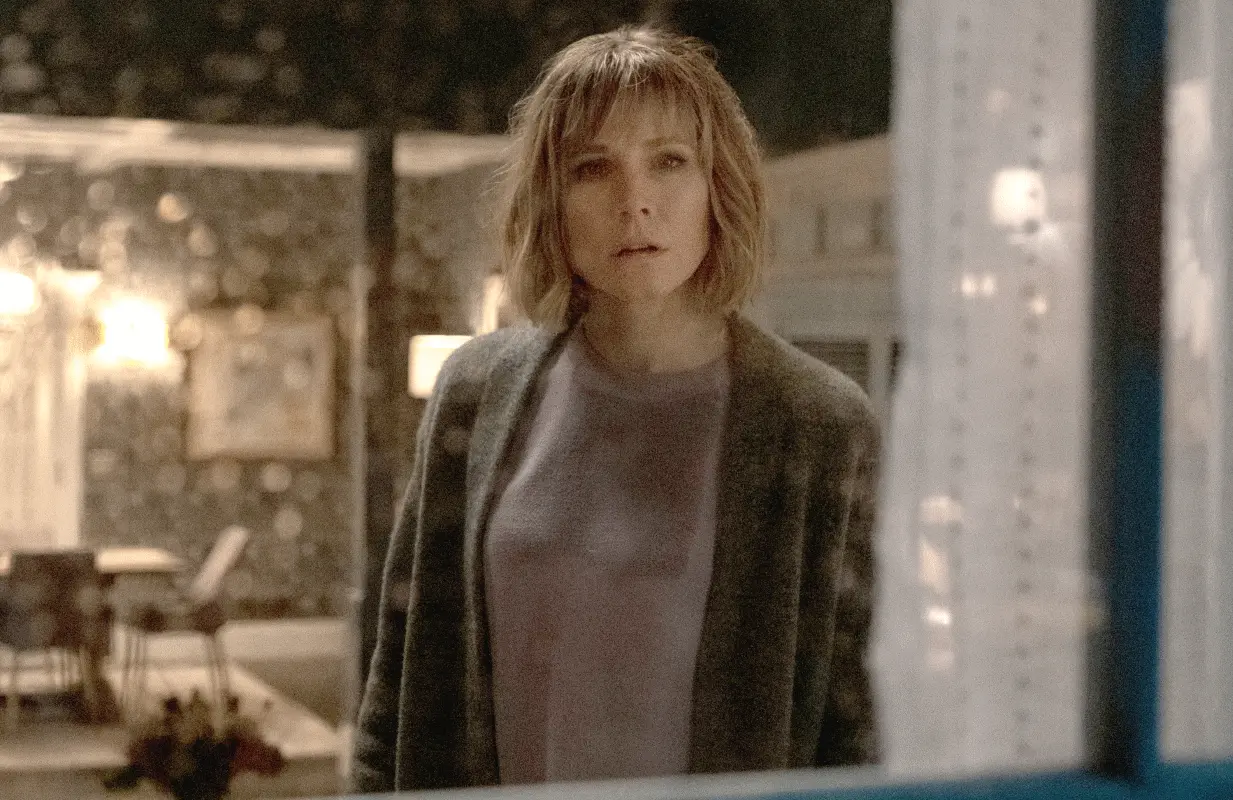 Kristen Bell is The Woman in the House Across the Street From the Girl in the Window. (Photo: Netflix)
Kristen Bell is The Woman in the House Across the Street From the Girl in the Window. (Photo: Netflix)Netflix's new limted series The Woman in the House Across the Street from the Girl in the Window stars Kristen Bell as Anna, a suburban woman recovering from heartbreak and loss and not really doing all that well. When a new neighbor moves in across the street, her curiosity leads to an obsession, which is only heightened when she believes she sees a woman get murdered, even though everyone from the police to the woman's boyfriend insists it never happened.
If this plot sounds familiar, it should. It's an intentionally thin gloss on The Woman in the Window, The Girl on the Train, and a handful of other paranoid thrillers of recent vintage. Based on the title alone, you'd be forgiven for thinking that The Woman in the House Across the Street from the Girl in the Window is your basic spoof movie, something like Date Movie or Don't Be a Menace to South Central While Drinking Your Juice in the Hood. Only it's not, so much. Instead of rapid-fire, reference-heavy jokes, The Woman in the House is a deeply committed facsimile of movies like The Woman in the Window, only this time it's bad on purpose. The difference between the two is almost indiscernible, other than the fact that the original Woman in the Window is more entertaining because it's not concerned with tracing the lines of another movie and is instead free to be the bonkers, terrible, but often deeply and peculiarly watchable movie it is.
As a result, The Woman in the House Across the Street from the Girl in the Window ends up being most interesting for the genre cliches it spoofs, and trying to trace their inspirations. Some are incredibly obvious from the title. Others, less so. Here's a guide to tsome of the many referenced works in The Woman in the House Across the Street from the Girl in the Window.
The Girl on the Train
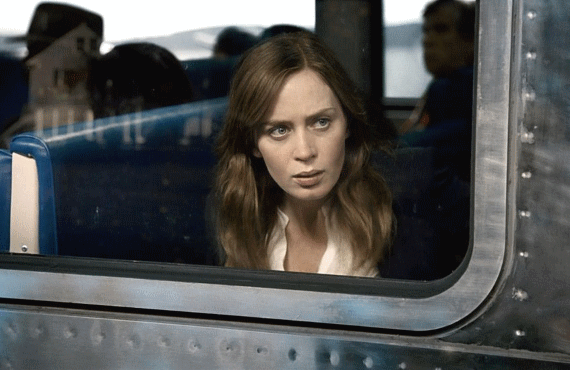
Based on the 2015 bestselling novel by Paula Hawkins, The Girl on the Train was adapted into a film in 2016 by director Tate Taylor, best known for directing The Help, though in terms of the kind of best-case-scenario he was going for in this movie, the better comparison of his films would be the bonkers/wonderful Ma. Emily Blunt starred as an unhappily estranged woman who takes the train every day and in her wretched state begins to fixate on a particular home she spots along the route, in particular the pretty young wife of a handsome man who one day just stops showing up. Blunt's character becomes unhealthily obsessed with finding out what happened, inserting herself into the lives of the woman's husband and therapist, and making herself look completely unhinged to both the cops and her ex-husband. The novel was trashy page-turner, but it lost a lot of its urgency in the translation to the big screen and was ultimately considered a flop (although Blunt did get a Screen Actors Guild nomination for her performance).
Echoes of The Girl on the Train show up throughout The Woman in the House Across the Street from the Girl in the Window, from Anna's drinking problem to the part where she ends up romantically drawn to the boyfriend of the supposed murder victim. There's even a traumatic recurring bit with a casserole dish that recalls the traumatic memory of an incident with a platter of deviled eggs in The Girl on the Train.
The Woman in the Window

A few years after The Girl on the Train, author A.J. Finn (pseudonym for Daniel Mallory, who got in trouble in 2019 for fabricating a whole bunch of stuff about himself, but that's a whole other story) published The Woman in the Window, a title so similar to The Girl on the Train that it was impossible not to assume that it was an intentional ploy to graft off of the earlier novel's vibe and success. Well, that and the fact that The Woman in the Window shared a lot of story similarities to The Girl on the Train, most specifically a woman whose life has crumbled around her thinking she's been made privy to a woman's murder while everybody else thinks she's out of her mind.
In the film adaptation, Amy Adams plays Anna, an agoraphobic social worker trapped in her townhouse with very limited contact to the outside world. She thinks she sees a murder happen in the window of the house across the street (something that happens exactly in the Kristen Bell version), only to have everybody tell her that the woman she thought she saw killed is both alive and not the woman she thought she was. Anna goes through all sorts of psychological trauma until the final third of the movie twists up the story until its thrilling/insane conclusion.
Obviously this makes up the bulk of the foundation of The Woman in the House Across the Street from the Girl in the Window, which ends up feeling a bit like Netflix picking at the bones of its own carcass, since the Amy Adams film was also a Netflix original. The did-she-witness-a-murder-or-not mystery is the same, as is the fact that Anna (they're both named Anna) is unable to cross the street to help the woman being killed, only in the parody version it's because Kristen Bell's Anna is afraid of rain. Also in the movie, Anna's husband and kid — who it seems like she's been communicating with by phone — turn out to have been dead this whole time, something that is replicated very early in the first episode of The Woman in the House Across the Street from the Girl in the Window, to the point where it's not even treated as a big spoiler-worthy revelation.
Rear Window
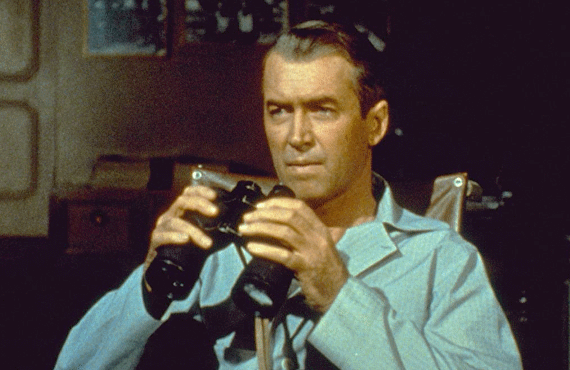
It's important to note that in as much as The Woman in the Window was tonally similar to The Girl on the Train, it was even moreso a blatant rip-off of Alfred Hitchock's legendary Rear Window. In that film, Jimmy Stewart plays a man who's laid up in his apartment with a leg injury who turns to snooping on his neighbors via their apartment windows that overlook a courtyard. He also believes he witnesses a murder and becomes obsessed with solving it. This setup, like many of Hitchcock's movies, has been referenced, copied, and parodied endlessly, from The Simpsons to Shia LaBeouf, but The Woman in the Window was particularly brazen about it. With The Woman in the House Across the Street from the Girl in the Window, we're dealing with a parody of a facsimile, so boning up on your Hitchcock can only benefit you here.
Desperate Housewives
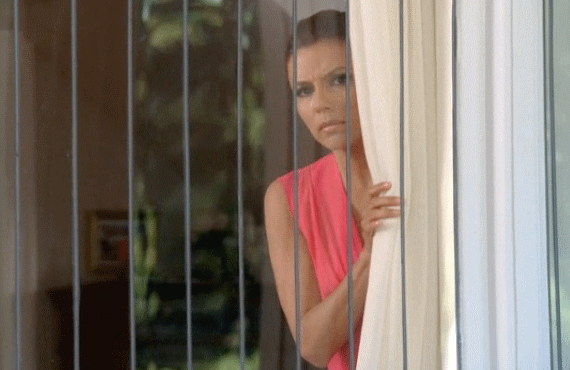
Perhaps the biggest difference between The Woman in the House Across the Street from the Girl in the Window and the movies it references is that they all took place in the city, while Kristen Bell's Anna lives in the suburbs, with all its manicured lawns and prying eyes. The aesthetic here feels very Desperate Housewives, especially with the neighbors nosily scoping out the new resident moving in, not to mention the whiff of mystery and murder.
Gaslight
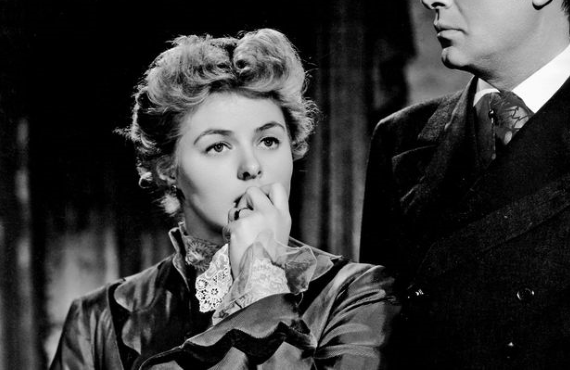
The hot-button term in psychological thrillers like The Woman in the Window is "gaslighting," a.k.a. when someone (very often a woman) is made to believe that they didn't see/hear/experience something that they know in her heart of hearts they did. As helpfully pointed out in the set-up to a sketch from last week's SNL, the term stems from an actual film, the George Cukor-directed 1944 film Gaslight, starring Ingrid Bergman, who won an Academy Award for her performance. In the film, Bergman plays a woman whose aunt was murdered 10 years prior and who begins experiencing strange occurrences while staying in her late aunt's home. Of course it turns out that the strange occurrences are being done to her on purpose in order to drive her mad, and it's why so many of paranoid thrillers made today lead to a twist where the heroine's significant other is secretly a manipulative, murderous monster.
The Others

In the scene in the first episode of The Woman in the House Across the Street from the Girl in the Window where Anna is reminded that her daughter is actually dead, the shot of Anna's not-real daughter playing in her bedroom is shot eerily like the famous moment in the Nicole Kidman movie The Others where Kidman thinks she sees her daughter playing on the floor, but really it's a ghost. That movie also has a dead-children twist in it, making the compositional similarities between the two shots unmistakable.
The Hand That Rocks the Cradle
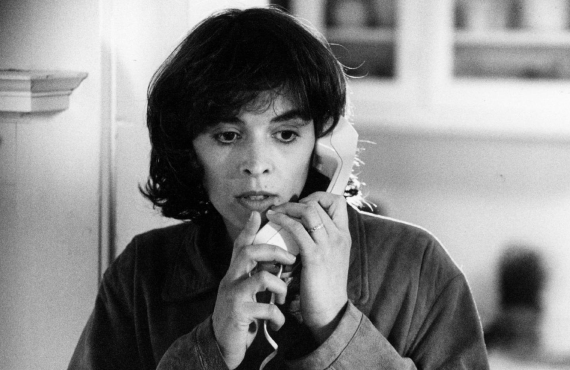
Anna also has some interactions with a humble, kindly gardener/handyman who works in various yards and houses on her suburban street. This character trope — the hulking figure who is ultimately an innocent — has been used in movies dating all the way back to To Kill a Mockingbird, although here it feels borrowed from one of its more controversial instances: The Hand That Rocks the Cradle. In that film, Ernie Hudson plays a developmentally disabled gardener who is one of the few people to see Rebecca DeMornay's sinister nanny for who she is. That movie is another psychological thriller about gaslighting, as Annabella Sciorra is terrorized and made to feel crazy within her own home.
The Woman in the House Across the Street from the Girl in the Window premieres on Netflix Friday, January 28th.
People are talking about The Woman in the House Across the Street from the Girl in the Window in our forums. Join the conversation.
Joe Reid is the senior writer at Primetimer and co-host of the This Had Oscar Buzz podcast. His work has appeared in Decider, NPR, HuffPost, The Atlantic, Slate, Polygon, Vanity Fair, Vulture, The A.V. Club and more.
TOPICS: The Woman in the House Across the Street From the Girl in the Window, Netflix, Alfred Hitchcock, Amy Adams, Emily Blunt, Kristen Bell
- Reacher debuts at No. 2 on Nielsen's Streaming Top 10 as Ozark tops it for the third straight week
- The Woman in the House Across the Street from the Girl in the Window's surprise finale cameo came at the last minute, with Netflix's help
- The Woman in the House Across the Street From the Girl in the Window mostly didn't work, but its ending mad the entire series worth it
- Netflix's The Woman in the House Across the Street From the Girl in the Window is a comedy and mystery that is neither comedic nor mysterious